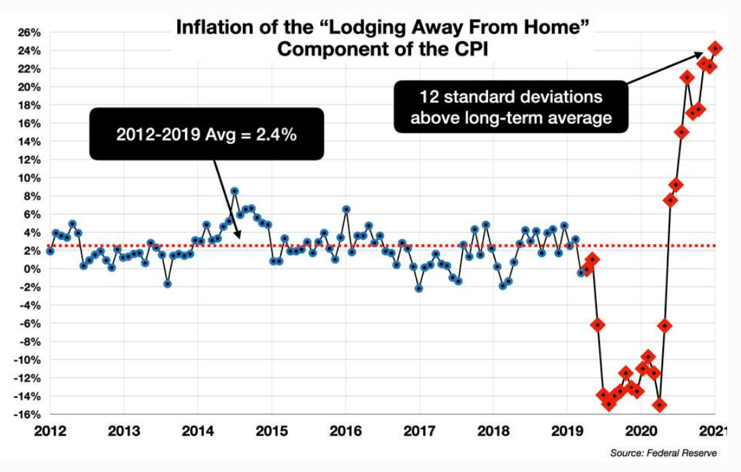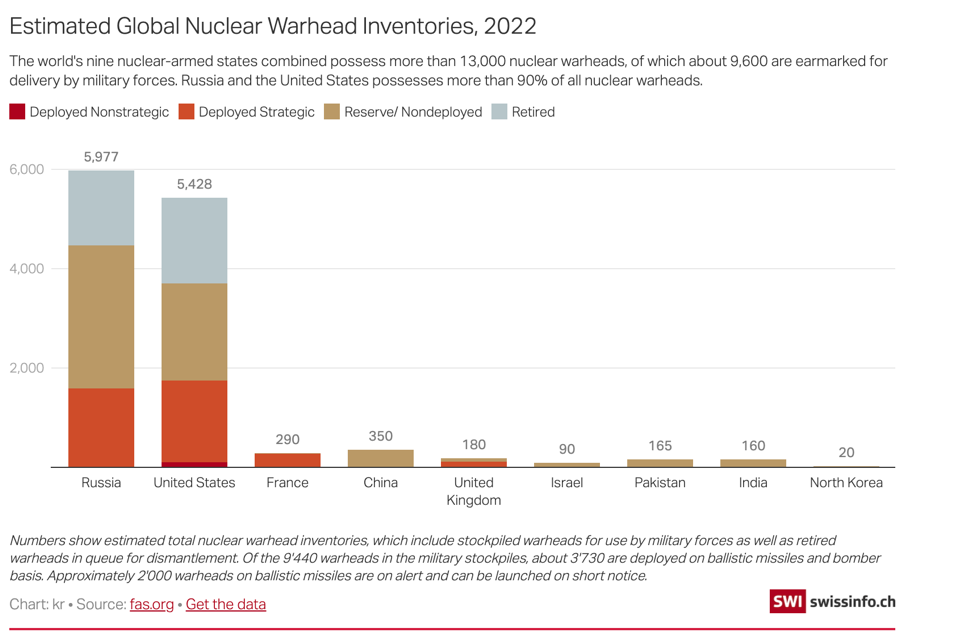 Covering COVID-19 is a daily Poynter briefing of story ideas about the coronavirus and other timely topics for journalists, written by senior faculty Al Tompkins. Sign up here to have it delivered to your inbox every weekday morning.
Covering COVID-19 is a daily Poynter briefing of story ideas about the coronavirus and other timely topics for journalists, written by senior faculty Al Tompkins. Sign up here to have it delivered to your inbox every weekday morning.
The global concern over whether mankind could be unhinged enough to start a nuclear war is leading to a rush to buy potassium iodide pills.
This is the 2022 version of the duck and cover drills that schoolchildren learned during the Cold War. And it may be about as useful. The Centers for Disease Control and Prevention explains:
KI (potassium iodide) is a salt of stable (not radioactive) iodine that can help block radioactive iodine from being absorbed by the thyroid gland, thus protecting this gland from radiation injury.
The thyroid gland is the part of the body that is most sensitive to radioactive iodine.
In Belgium, nearly 30,000 residents went to pharmacies for free pills following Russian President Vladimir Putin’s announcement to put its nuclear deterrent forces on high alert and recent fighting at nuclear power plants in Ukraine, according to the Brussels Times.
Meanwhile, Bloomberg reported that there has been a 100-fold increase in demand for tablets in Finland ever since Russia invaded Ukraine, with pharmacies out of stock across the country.
OK, let’s slow down here. The CDC says, “People should only take KI (potassium iodide) on the advice of public health or emergency management officials. There are health risks associated with taking KI. … Taking (potassium iodide) more often than recommended does not offer more protection and can cause severe illness or death.”
Survival gear websites report they are out of stock, although I surveyed a lot of other supplement and survival-prep sites that appear to have plenty.

(doomsdayprep.com)
If you are over age 40, the pills will not do much for you, the CDC says.
These pills do not protect against the other effects of a nuclear blast, including fires, and cancer-causing cesium-137 or strontium-90. You can add to that list water contamination, structural devastation, starvation, nuclear winter and a long list of other horrors that a nuclear war would bring. Your thyroid may be the least of your worries.
The New Republic adds to this madness:
Predictably, the prepper cycle has returned along with the threat of World War III, though the talking points are particularly ludicrous when laid out next to the potential threat.
The manager of a Texas survival shelter business says he’s already sold five bunkers since late February, each one costing between $70,000 and $240,000. A company selling freeze-dried meals published a color-coded map of caves across the United States that might reduce the chances of radiation poisoning should a person manage to “go deep” and have enough supplies. It’s also selling kits that allege to remove radiation from the food it provides at a discount of $74.99.
Let’s put the rush on these pills into some context. This is how many nuclear weapons countries around the globe have on hand:
A Swiss science website quotes Stephen Herzog, a researcher at the Center for Security Studies at the federal technology institute ETH Zurich. What he says is sobering enough to stop any thinking person from considering that nuclear weapons are a way to solve a conflict:
But even the deployment of just a small part of this arsenal would have devastating long-term consequences.
“The atmospheric overpressure caused by the shockwave of the nuclear explosion would be able to destroy entire buildings up to tens of kilometres away, apart from those made of hardened reinforced concrete,” he explains.
Hundreds of thousands of people could be instantly killed or injured by debris or collapsing buildings. In addition, the explosion would create visible, infrared, and ultraviolet light waves that would combine to produce a kind of large, very hot fireball capable of burning everything and creating third-degree burns within an even larger radius than the blast damage.
Contaminated populations would have to deal with subsequent radioactive fallout, which can cause tumors and birth defects.
Today’s atomic weapons technology makes it possible to wipe out entire metropolises even over great distances. “Every major city in the US is potentially half an hour from destruction, and every major NATO city in Europe is roughly 20 minutes from being destroyed by one of these ballistic missiles,” says Herzog.
So what good are these iodine pills? Maybe the pandemic taught us a few things. When things spin out of our control, it seems that we have a compulsion to do something, even if there is not much evidence that something is useful. How many gallons of bleach were sold to people who wiped down every inch of their home and office to fight COVID-19, only to discover the virus does not travel that way?
Experts say they could be useful to dose children after a nuclear power plant accident. But even then, the pills would be coupled with mass evacuations and the surrounding area would be uninhabitable for decades. In short, experts say do not think a bottle of iodine pills will protect you from nuclear war any more than hiding under a desk would when I was a child.
Covering today’s inflation figures
The domestic story of the day today will likely focus on the Consumer Price Index figures which, even though ugly, won’t capture the most recent gasoline price increases of the last couple of weeks. The figures will represent the inflation rate in February.
CPI is based on a Labor Department survey of thousands of retail stores, service establishments, rental units and doctors’ offices, all over the United States. The Bureau of Labor Statistics surveys the prices of 80,000 goods and services across the whole month.
But Russia invaded Ukraine on Feb. 24, when the average price of gasoline was $3.53 per gallon, which is 70 cents less than today.
Forbes argues that the CPI’s picture of inflation is an exaggeration, even that the government’s model for estimating inflation at the consumer level is skewed. Here’s why:
The index is being overdriven by a small handful of components. It compromises its value as a guide for fiscal or monetary policy decisions.
The CPI comprises dozens of categories and hundreds of individual items. Here is a graphic depiction (from the Pew Foundation) of the major category weightings.
Some of the biggest categories on that chart are also some of the most volatile, including, of course, gasoline. But some of the biggest drivers of inflation figures in the last few months have been new and used car prices, hotel and motel costs and housing. Look at the severe ups and downs of those hotel costs and used car costs during the pandemic:

(Forbes)

(Forbes)
They raise the valid question of whether such volatility makes the CPI a reliable picture of the nation’s economy. Now, look at this from Forbes:
Along with the inflation in air fares (up 8 standard deviations), these categories account for almost 10% of the weight of the CPI. They have jumped above their long-term averages by an average of 12 standard deviations.
This has skewed and distorted the entire CPI. In some months last year, the Used Car component alone was responsible for a third of the total annualized increase in “inflation.”
Travelers are getting hesitant
A new survey of travelers found that many are getting concerned about the war in Ukraine, especially international travelers. Half of the people who planned to travel to Europe this year say they have growing worries.
But 56% of Americans surveyed say they plan some sort of spring break travel this year. Three-quarters say they will stay in the U.S. and 23% said not only are they staying in the States, they are staying home while they take a break from work or school.
Spiders the size of the palm of your hand are spreading to the East Coast
First, know that the Joro spider is around three inches long, but they are not venomous or aggressive. I am not posting a photo because I didn’t want to freak some of you out, but if you want to see it, just click here. It is bright yellow and really impressive. Go ahead, take a look. We will wait.
Joros are not just big, they are spreading. USA Today talked with experts who say you should leave the critters alone because they eat lots of bugs:
If you haven’t met the colorful, massive Joro spider yet, you may soon be introduced to the invasive species if you live on the East Coast, scientists predict.
The predominately yellow spider, which can get as big as the palm of your hand, was first spotted in Georgia in 2013. Originating from Asia, there is no clear answer for how it made it into the United States other than it likely came in a shipping container. But in nearly 10 years, the species has rapidly spread across Georgia and other parts of the Southeast.
Now, scientists from the University of Georgia say in a study published in the journal Physiological Entomology the Joro spider could take over much of the East Coast in the coming years.
NPR reports that the Joro spider is native to Japan and its name has a colorful story:
It gets its name from Jorōgumo, which in Japanese folklore that can turn itself into a beautiful woman to prey on unsuspecting men.
NPR said the spider hatchlings emerge from their egg sacks and do something called ballooning, which is when they use web silks to carry them on the wind to new locations. It reminds me of that scene in Charlotte’s Web when all of the spider babies are sailing away.
One more thing: Spider experts say not only do Joros eat lots of mosquitos, but birds apparently love to gobble up the spiders, which apparently are as tasty as they are filling.
We’ll be back tomorrow with a new edition of Covering COVID-19. Are you subscribed? Sign up here to get it delivered right to your inbox.








